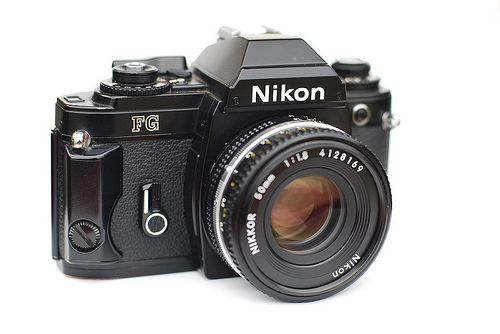A brief history:
A century and a half ago, when the process of photography was in its infancy, there was only monochrome. There were some browns and blues, it wasn’t until much later that the process of black and white moved to the forefront. As you can imagine, the earliest versions didn’t have the contrast we see today, or even fifty years ago. As the process improved on the sharpness and smoothness from white to black, we now have a medium that has been used successfully to ‘tell the story’ from the war torn beaches of Iwo Jima, to the spectacular landscapes of Yosemite, and the dramatic portraiture of modern digital camera.
Seeing in Black and White:
As I mentioned in the Image Capture post, the essential fabric of an image contains, lines, shapes, textures, and colors. Now what happens when you take out the color? One of the other three items needs to be strong. Strong lines. Strong shapes. Or a strong texture.
The connection between our eyes and our brains compensates for many of the optical discrepancies that exist in the world. And this is different from what the camera and lens capture. How many times have you captured an image and wondered why it was different from what you saw? We have to train our minds to think a bit differently. It may take some time, I know it did for me, once you can think about how the camera is going to see, you can improve your photography.
Video: Seeing in Black and White with Eileen Rafferty. Two hours, it will change how you look at color.
There is way to much to explain in detail, so let me break it down. Our eyes get fooled by certain colors. At the same brightness, yellow appears brighter that blue. Black and white photography is all about the brightness, or luminosity of the tone. It’s all about contrasting tones not specific colors. You could have a spectacular scene in color, but if the tones are similar, the image will fall flat in black and white.
Another dimension to black and white photography is that it can eliminate the distraction of color. If the scene is so dramatic, black and white can help bring that out. Indeed, many photo journalists still use black and white for this reason. Any scene with flat colors may also be a candidate for a black and white image. Think of cloudy landscapes, or some watery type scenes.
Some Tools:
Certainly, Photo Shop is very capable of converting to black and white. Personally I would recommend Lightroom. I has a very capable black and white process that is easy to learn and use. Try out the ‘on image adjuster’. Select the tool in the BW section, top left. Go to the image and drag up or down to adjust the brightness. Another tool I use is part of the Nik Collection, Silver Efex Pro. This tool is use for some extremely dramatic effects. You can also add different kinds of boarders for that vintage feel. The Nik Collection is now a free plugin for Photoshop and Lightroom. Just be aware it will produce some LARGE files.



